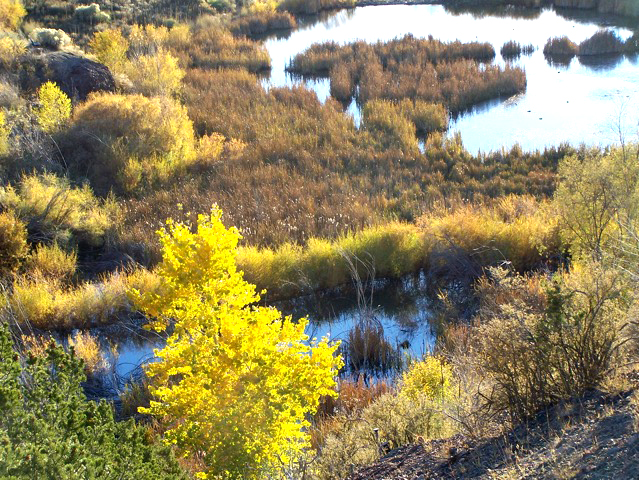We’re grateful to Judith Polich for granting the Mid Rio Grande Times permission to print an excerpted version of this article, originally published in the Albuquerque Journal (click here for the full piece).

According to the New Mexico State Wetland Summary, we used to have about a million acres of wetlands. We have lost 52%. Now only 0.6% of our land base is wetland. In our high desert communities those remaining should be considered our crown jewels. They have always been vulnerable but with the new Supreme Court ruling, Sackett vs U.S. EPA, what few protections most of our fragile, drought-prone wetlands had have been lost.
This politically motivated decision, which disregards any scientific understanding of wetland habitats, decimated many of the protections available under the Clean Water Act by revoking protections from wetlands that lack a “continuous surface water connection to larger streams, lakes and rivers.” Some 93% of New Mexico’s waterways are intermittent, including many of our ephemeral arroyos, cienegas, effluent-dependent streams, playa lakes and other man-made reservoirs, waterway and canals. Even the Rio Grande runs dry in certain areas at times.
The effect on New Mexico will be devastating. We do require permits for certain ground water discharges, but we do not have a permitting system for surface water, including wetlands. Instead we have regulated our wetlands through the authority provided by the Clean Water Act and regulatory authority provided by the US Army Corp of Engineers permitting process.
Until we get regulations in place, many of our remaining wetlands and waterways are vulnerable to the rapacious actions of developers, ranchers and miners. We simply cannot let our few remaining wetlands be drained and filled.
To make matters worse, polluters may no longer need to have a permit to discharge hazardous materials into many of our watersheds. And since some large infrastructure projects like pipelines will no longer need Clean Water Act permits or environmental reviews, states may no longer be able to object even if proposed projects will harm our waterways and water users.
It is very clear that this ruling puts us all at great risk. As NMED Department Secretary James Kenny said, “The U.S. Supreme Court’s decision amounts to cultural appropriation for New Mexico residents and tribal members, stripping us of our connections to our most precious natural resource. This comes at a time when climate change demands even greater protection of ephemeral streams, wetlands and groundwater. While this decision is devastating to water-starved Western states, we will not be deterred from our mission to protect water for current and future generations.”
But it is not that easy. It takes legislative and administrative action, money, and EPA approval. John Roderick, NMED Water Protection Director, told the State Water and Natural Resources Committee in June that to get surface water permitting in place may take up to six years at current budget levels. We need to mandate a faster process and give it a budget priority. Six years is too long. And let’s not pretend this can get done in a 30-day session. We need a special session to tackle this issue and to address other long-deferred environmental matters. And we need immediate action on stop-gap measures until new regulations can take effect. How about some creative thinking? Can we regulate our surface water and wetlands under any current authority? We were caught unprepared. We need to act like it’s the emergency it is.
Judith Polich is a New Mexico resident and writes the climate change column“Cutting Your Carbon Footprint” for the Albuquerque Journal. She can be reached at judith.polich@gmail.com

